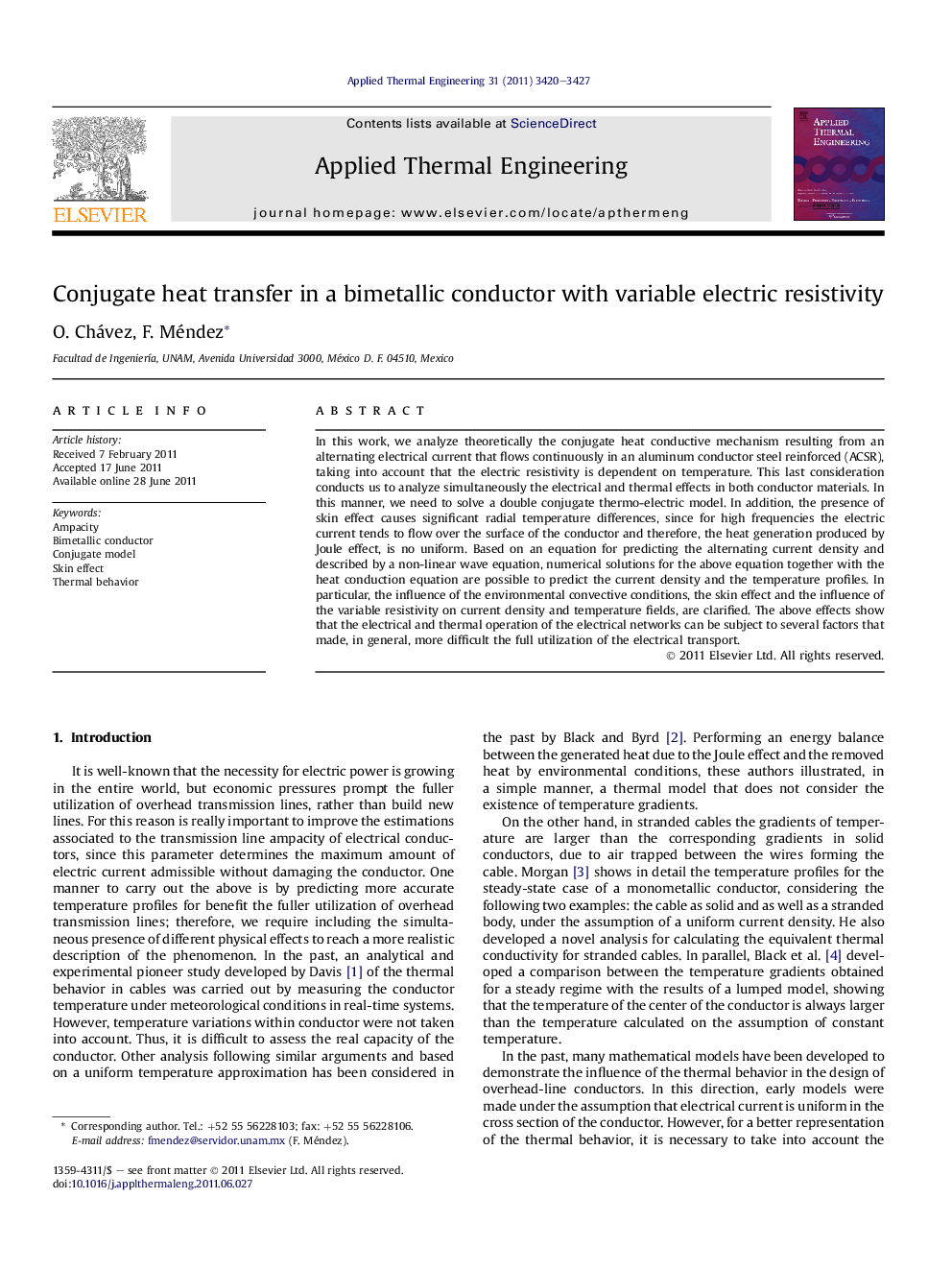| Article ID | Journal | Published Year | Pages | File Type |
|---|---|---|---|---|
| 647681 | Applied Thermal Engineering | 2011 | 8 Pages |
In this work, we analyze theoretically the conjugate heat conductive mechanism resulting from an alternating electrical current that flows continuously in an aluminum conductor steel reinforced (ACSR), taking into account that the electric resistivity is dependent on temperature. This last consideration conducts us to analyze simultaneously the electrical and thermal effects in both conductor materials. In this manner, we need to solve a double conjugate thermo-electric model. In addition, the presence of skin effect causes significant radial temperature differences, since for high frequencies the electric current tends to flow over the surface of the conductor and therefore, the heat generation produced by Joule effect, is no uniform. Based on an equation for predicting the alternating current density and described by a non-linear wave equation, numerical solutions for the above equation together with the heat conduction equation are possible to predict the current density and the temperature profiles. In particular, the influence of the environmental convective conditions, the skin effect and the influence of the variable resistivity on current density and temperature fields, are clarified. The above effects show that the electrical and thermal operation of the electrical networks can be subject to several factors that made, in general, more difficult the full utilization of the electrical transport.
► Simultaneous heat transfer and electrical current density in a composed bimetallic overhead cable is considered. ► The variable electric resistivity has an important influence on the process. ► A bimetallic electrical conductor is composed by a typical aluminum conductor steel reinforced.
